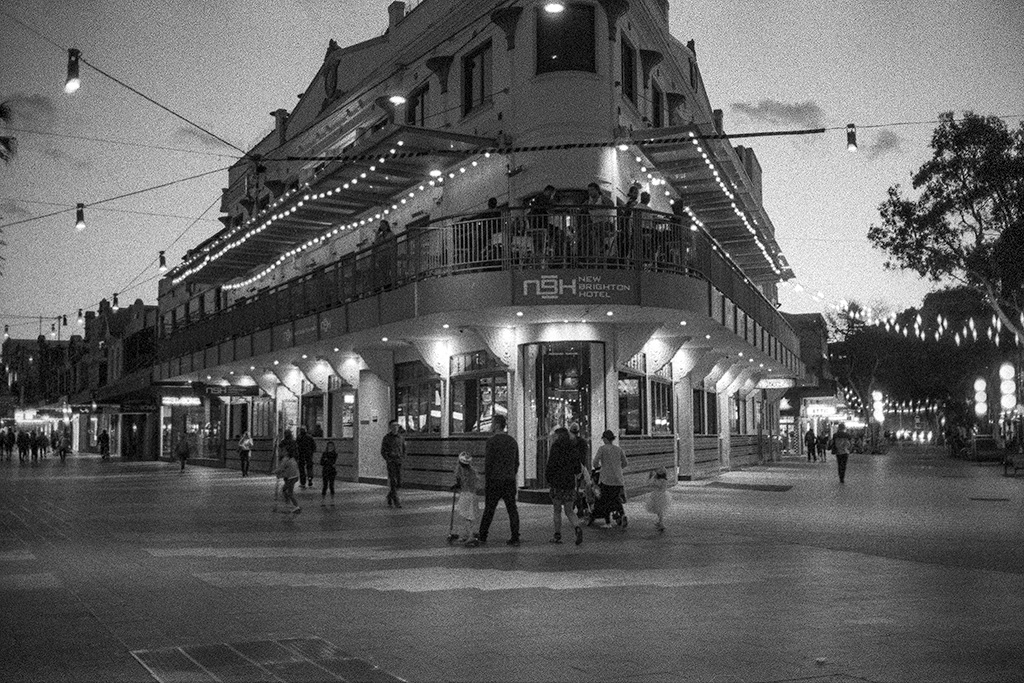I have no idea where to start with exposing this film for the night picture that I want to make. I have attached a picture, not mine, but similar to what I see as I drive over the bridge at night, with the river below, and the industries lit up with lights. The lens will be set at infinity, the aperature set full open, f2.
Do I open for 1 second, or 60 seconds? Don't have a clue, and with the time I will have up on the bridge, I doubt that I can do many brackets, so I'm looking for some guidance.
I suppose I will shoot the film at 3200, and develop in D76
I've done some work in similar lighting situations. Unfortunately, there is no 'standard exposure' settings I can give you. It depends on the actual brightness of the light, and how much shadow detail and highlight detail you need and what you're willing to sacrifice.
Tmax 3200 is designed to be push-processed. Its real speed is about 1000. When films are pushed, they lose shadow detail, while the push-developing brings midtones back to where they should be and highlights usually go a little higher on the scale then they should be.
Tmax 3200 and Ilford's similar Delta 3200 are made to that they build more shadow density when push developed compared to normal films, and because they're designed to be slightly low in contrast when developed at their 'true' ISO speeds, the increased contrast from pushing doesn't look as bad as it does with normal films.
There is a catch, however. These films do not work well with most developers, and D-76 is one of the worst I have tried. I cannot emphasize enough how important it is to use one of the developers that were designed for these films. Kodak Tmax Developer was specifically designed for push-developing Tmax 3200, though it also works great as a general purpose developer for other films. Ilford DDX is similar in how it works but I don't know what developing times to use for the Kodak film with it.
I know that Tmax Developer is far and away the best developer for Tmax 3200 and is my choice for Delta 3200 too. Buy a bottle of it and use it for this project.
Here are some of my shots:
The first two were shot on Ilford Delta 3200 after Kodak discontinued the original Tmax 3200, and the last two are older photos shot on the original Tmax 3200. The two films are similar enough that pictures shot on either make good examples.
Setting exposure was tricky on these. There was little or no shadow detail because things in the scenes were either brightly lit, or not lit at all. Normally we set exposure with negative films to ensure shadow detail is preserved. That won't work here.
I used the spotmeter built in to my camera, an Olympus OM-4T, for determining exposure on these. The brightly lit areas and midtones are going to be the most important things, the opposite of normal practice with BW negative film.
What I did was spotmeter the bright lights and set exposure 3 stops over the meter reading (that is, overexpose 3 stops). Then I checked the midtones, if there were any, to make sure they didn't fall too low. Midtones should meter around the same as the exposure you calculated by giving 3 stops over on the bright lights. If its showing the midtones will be underexposed more than a half stop or so, give another stop extra exposure. This film can tolerate some overexposure in the highlights.
Forget about shadows, in such harsh light, preserving much shadow detail is not gonna happen.
I hope that wasn't too confusing or complex. These are not easy situations to determine exposure for, but my method works and I did these shots with no need to bracket. Don't forget to use Tmax Developer. If you use D-76 you will be disappointed. Xtol is said to work great for Tmax 3200 too, if you have that and don't want to buy Tmax Developer, but I cannot personally promise that, as I have not tried it.









